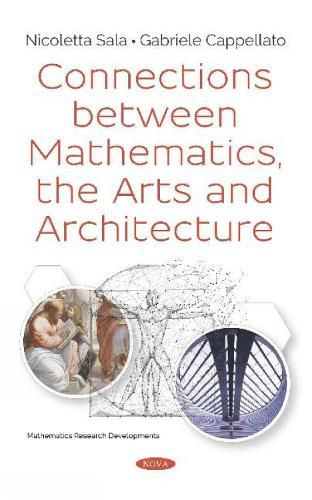Readings Newsletter
Become a Readings Member to make your shopping experience even easier.
Sign in or sign up for free!
You’re not far away from qualifying for FREE standard shipping within Australia
You’ve qualified for FREE standard shipping within Australia
The cart is loading…






The purpose of this book is to analyse the interdisciplinary aspects of mathematics and geometry in reference to nature, art, and architecture. In Chapter 1, we introduce symmetry and its different meanings. Symmetry is a notion, which has been applied in the arts and architecture to find harmony and beauty. It joins aesthetics and practice, science and economy, mathematics and philosophy. In this chapter, we also analyze the influence of Vitruvius and the concept of old symmetry, received by the Renaissance. It is also interesting to note how in contemporary architecture there is often the presence of the break of symmetry (for example in the Frank O Gehry’s works). Chapter 2 explains how proportions, and in particular, the golden section, has introduced aesthetic canons that have strongly influenced many artists like Polycletus, and architects, from Ictinus to Le Corbusier. In Chapter 3, we discover how curves and spirals find their application in artistic works, for example in Mycenaean jewellery, and architectural works, from the Baroque of Francesco Borromini to the Land Art of Smithson. Chapter 4 presents the importance and influence that Platonic solids and polyhedrons have had on philosophy and art through different historical periods and different cultures. For instance, we look at how Platonic solids are connected to the theory of Empedocles’ elements and Hippocrates’ theory of humors. Chapter 5 describes surfaces, discovering how different cultures have used them in different manners, including Roman aqueducts, iron bridges, and finally arriving on modern structures that base their forms on hyperboloids and paraboloids. In Chapter 6, we introduce fractal geometry, as a geometry that tries to explain nature’s irregular shapes, trying to overcome the limitations imposed by old Euclidean geometry. We also analyse how fractal geometry has influenced architecture in this century.
$9.00 standard shipping within Australia
FREE standard shipping within Australia for orders over $100.00
Express & International shipping calculated at checkout
The purpose of this book is to analyse the interdisciplinary aspects of mathematics and geometry in reference to nature, art, and architecture. In Chapter 1, we introduce symmetry and its different meanings. Symmetry is a notion, which has been applied in the arts and architecture to find harmony and beauty. It joins aesthetics and practice, science and economy, mathematics and philosophy. In this chapter, we also analyze the influence of Vitruvius and the concept of old symmetry, received by the Renaissance. It is also interesting to note how in contemporary architecture there is often the presence of the break of symmetry (for example in the Frank O Gehry’s works). Chapter 2 explains how proportions, and in particular, the golden section, has introduced aesthetic canons that have strongly influenced many artists like Polycletus, and architects, from Ictinus to Le Corbusier. In Chapter 3, we discover how curves and spirals find their application in artistic works, for example in Mycenaean jewellery, and architectural works, from the Baroque of Francesco Borromini to the Land Art of Smithson. Chapter 4 presents the importance and influence that Platonic solids and polyhedrons have had on philosophy and art through different historical periods and different cultures. For instance, we look at how Platonic solids are connected to the theory of Empedocles’ elements and Hippocrates’ theory of humors. Chapter 5 describes surfaces, discovering how different cultures have used them in different manners, including Roman aqueducts, iron bridges, and finally arriving on modern structures that base their forms on hyperboloids and paraboloids. In Chapter 6, we introduce fractal geometry, as a geometry that tries to explain nature’s irregular shapes, trying to overcome the limitations imposed by old Euclidean geometry. We also analyse how fractal geometry has influenced architecture in this century.